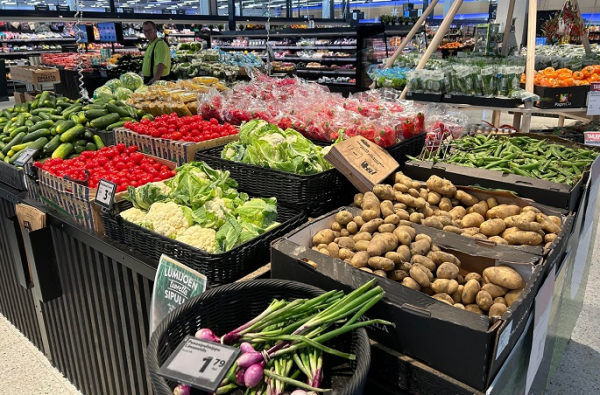Trade deficit in Finnish agrifood sector widens

The trade deficit in Finnish agrifood sector widened slightly in 2024, said the Natural Resources Institute Finland (Luke) on Tuesday.
The total value of food exports approached two billion euros, while imports rose by nearly four percent, exceeding 5.9 billion euros.
According to the latest outlook by the Luke, Finland’s agriculture and food economy is undergoing structural and economic transformation.
At the same time, Finnish food exports are enjoying strong momentum, despite continued uncertainties in the global market landscape and economic growth forecasts.
In 2024, the value of Finnish food exports increased by nearly six percent. Demand for oats and dairy products remains strong both domestically and internationally.
Dairy products continue to be Finland’s most significant food export category – in 2024, they accounted for 491 million euros in export value. The dairy sector has maintained a positive trade balance throughout Finland’s EU membership.
Oats have demonstrated strong performance in the grain sector, with domestic consumption approaching 200 million kilograms and exports reaching record levels.
“The total grain harvest in 2025 is projected to be lower, at 2.8–2.9 billion kilograms, yet Finland’s grain self-sufficiency remains robust. No significant price fluctuations are expected”, said Luke’s Senior Scientist Csaba Jansik.
Beef consumption has increased, but supply challenges and producer prices in Finland have lagged behind the rest of Europe. Domestic demand for pork is declining, but exports continue to support production. Poultry consumption exceeds domestic production, reducing self-sufficiency to 85 percent.
The strengthening of international demand, particularly for dairy fats, has pushed up global prices, which have also risen in Finland with a slight delay.
“Global market prices, especially for fats, have been rising for nearly two years. The strongest growth phase may now be over, but prices are expected to remain favourable in 2025, although international uncertainties make forecasting difficult”, said Senior Scientist of Luke Olli Niskanen.
In horticulture, greenhouse cucumber exports remain strong, especially to the Baltic countries. Tomato production has declined, but domestic consumption is higher, and nearly all production is used within Finland.
“At best, greenhouse cucumber yields can exceed 200 kilograms per square metre – that’s more than two million kilograms per hectare,” said Luke’s Senior Statistician Anna-Kaisa Jaakkonen.
The value of international food trade has grown significantly in recent years. Between 2000 and 2024, it increased fivefold – from around 400 billion to nearly two trillion US dollars.
However, according to Jyrki Niemi, Research Professor of Luke, US tariffs are a clear threat to the growth of international food trade, as they slow down trade flows, raise costs, reduce demand, and increase uncertainty.
“Trade policy in the food sector is undergoing a major transformation. Rising protectionism, geopolitical shifts, and the pursuit of strategic autonomy are reshaping food markets,” Niemi said.
- Trade
- Deficit
- Agrifood
- Finland
Source: www.dailyfinland.fi
